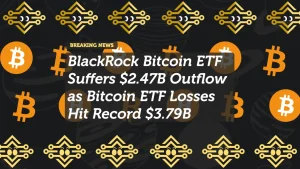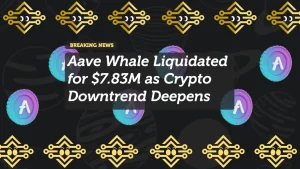
Fidelity Investments Explores Stablecoin and Tokenized Assets
Fidelity Investments, one of the largest asset management firms in the world, is making a deeper push into digital assets. The firm is actively testing a dollar-pegged stablecoin, signaling its intent to expand into blockchain-based financial products.
This move comes as institutional interest in cryptocurrency continues to rise, with Fidelity positioning itself as a key player in bridging traditional finance (TradFi) and decentralized finance (DeFi).
In addition to its stablecoin initiative, Fidelity is also working on a tokenized U.S. money market fund, which could compete with industry leaders like BlackRock and Franklin Templeton.
With blockchain technology transforming financial markets, Fidelity’s latest venture highlights the growing mainstream adoption of digital assets.
Fidelity’s Stablecoin Initiative: What We Know So Far
Fidelity’s stablecoin project is being developed by its digital assets division, which already provides cryptocurrency trading and custody services for institutional investors.
Key Details About the Stablecoin Initiative:
- The stablecoin will be pegged to the U.S. dollar, ensuring stability and usability in financial transactions.
- It is currently in the testing phase, with no immediate plans for release.
- The project aligns with Fidelity’s broader push into tokenized financial products.
While Fidelity has not confirmed when or if the stablecoin will launch, its involvement in stablecoin technology signals growing institutional confidence in blockchain-based payment solutions.
Tokenized Money Market Fund: A Game Changer for TradFi?
Beyond stablecoins, Fidelity is also exploring a tokenized U.S. money market fund, which could revolutionize how investors interact with traditional financial instruments.
Why This Matters:
- Lower Costs: Tokenization reduces administrative and operational costs associated with traditional funds.
- Increased Efficiency: Blockchain enables real-time settlement and transparency in financial transactions.
- Institutional Adoption: Competing with BlackRock and Franklin Templeton, Fidelity is betting on the future of tokenized assets.
This initiative demonstrates Fidelity’s commitment to integrating blockchain technology into mainstream financial services.
Why Are Stablecoins and Tokenized Assets Important?
The global financial system is evolving, and major institutions like Fidelity are adapting by embracing blockchain-based solutions.
1. Stablecoins Enable Faster, Cheaper Transactions
Stablecoins like USDT and USDC have become essential for:
- Instant cross-border payments
- Reducing transaction fees compared to traditional banking
- Providing liquidity in crypto markets
If Fidelity successfully launches its stablecoin, it could become a trusted option for institutional investors, further legitimizing stablecoins in traditional finance.
2. Tokenized Assets Bring Transparency and Security
Traditional assets like stocks, bonds, and real estate can be tokenized on blockchain networks, offering benefits such as:
- 24/7 trading availability
- Lower administrative costs
- Improved transparency and security
Fidelity’s move into tokenized money market funds signals that the financial industry is shifting toward digital asset management at scale.
How Fidelity’s Crypto Expansion Impacts the Market
Fidelity’s stablecoin and tokenization initiatives are part of a larger trend of Wall Street firms embracing blockchain technology.
Potential Market Impacts:
- Increased Institutional Adoption: More hedge funds, banks, and asset managers may follow Fidelity’s lead into stablecoins and tokenized assets.
- Greater Regulatory Clarity: As major financial firms enter the crypto space, regulators will be pressured to provide clear guidelines.
- Stronger Crypto Legitimacy: With Fidelity exploring blockchain technology, crypto becomes more mainstream.
Fidelity’s continued involvement in digital assets could help bridge the gap between traditional finance and the crypto economy.
Challenges and Regulatory Uncertainty
While Fidelity’s move into stablecoins and tokenized funds is promising, challenges remain:
1. Regulatory Scrutiny
- Stablecoins face increased regulatory oversight from agencies like the SEC and U.S. Treasury.
- New legislation could impact the development and adoption of tokenized assets.
2. Market Competition
- BlackRock and Franklin Templeton have already launched tokenized funds, making the space competitive.
- Fidelity will need a unique value proposition to stand out in the growing stablecoin and tokenized asset market.
3. Adoption Hurdles
- Institutional investors may be slow to adopt blockchain-based financial products due to technological and regulatory uncertainties.
- Traditional markets will need educational initiatives to understand the benefits of tokenization.
Despite these challenges, Fidelity’s involvement could accelerate the adoption of blockchain in traditional finance.
Final Thoughts: Fidelity’s Role in the Future of Digital Assets
Fidelity’s exploration of stablecoins and tokenized assets is a major milestone for institutional crypto adoption.
With its decade-long involvement in digital assets, Fidelity is positioning itself as a leader in bridging traditional finance and blockchain technology.
- Stablecoins could revolutionize payments and settlements for institutional investors.
- Tokenized funds could reshape asset management, reducing costs and improving efficiency.
- Regulatory clarity will be crucial in determining the long-term success of these initiatives.
As Fidelity continues to innovate, the financial industry is likely to see broader blockchain adoption, bringing crypto one step closer to mainstream finance.
Would you consider investing in stablecoins or tokenized assets through a firm like Fidelity? Let’s discuss.
















